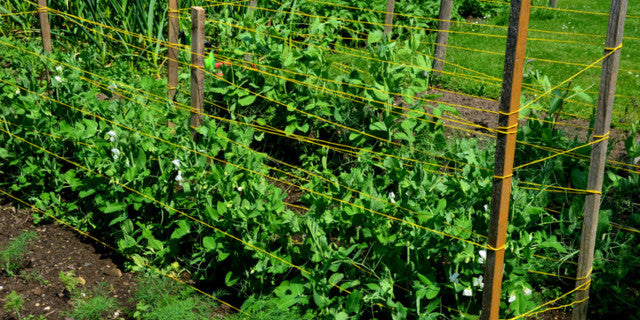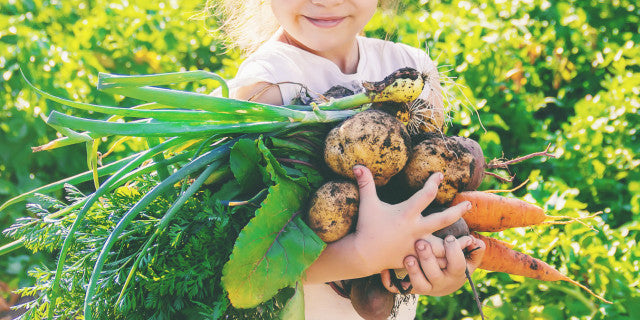Spring time for new Kiwi Gardeners
Spring is a favourite season of many gardeners and a time when many experiment with gardening for their first time. With the daylight hours getting longer and the days warmer many trees and perennial plants are springing back to life… and the best part is summer is still to come.
During September and October is a great time to start sowing tomatoes, capsicums and eggplants indoors as they take about 6-8 weeks to be large enough for transplanting. Even as far north as Auckland it is still relatively cold in early October, however Labour Weekend is traditionally popular for Kiwis to begin planting summer vegetables in the garden. This is because the risk of frost should have passed and it is generally warm enough for tender vegetables to grow outside from November onwards.
Spring is great because you can pretty much sow seeds of any vegetable, herb or fruit or flower you’d like to grow including but not limited to: Basil, Beans, Beetroot, Broccoli, Cabbage, Calendula, Carrot, Cauliflower, Coriander, Corn, Cosmos, Courgette, Cucumber, Dahlia, Eggplant, Fennel, Kale, Kohlrabi, Leek, Lettuce, Marigold, Nasturtium, Onion, Parsley, Parsnip, Peas, Potato, Pumpkin, Rocket, Rockmelon Spinach, Spring Onion, Tomatillo, Tomato, Watermelon, Zinnia.
We love spring in the vegetable garden, it’s a time when there’s always lots to do! Try to sow some seeds successively of the things you love the most. For example sow another small batch of tomato seeds 3-6 weeks after your first ones to ensure you’re never out of free gourmet tomatoes this summer.

Creating new garden beds
Establishing a new garden bed can take a little bit of work but the effort easily pays for itself in a short amount of time. If you’re a new gardener we recommend starting smaller rather than larger to keep your garden fun and manageable for yourself as you try your hand at gardening.
"No dig" gardening refers to an approach that minimizes the need for traditional digging, tilling, or turning the soil over. This enables worms and beneficial microorganisms to better do what they're meant to do, and adding organic matter like compost, brown leaves, and lawn clippings that break down naturally over time will boost your soil fertility and reduce/remove the need for expensive fertilisers.
When creating garden beds where there currently is ground cover such as lawn or weeds, our preference is to cover the entire area in advance with builders polythene or plastic tarps to kill the vegetation due to a lack of sunlight. This process will typically take 2 to 3 months however it can take as little as a month in summer if the grass cut short before covering (always cut this as short as possible before covering).
You can also achieve this by smothering the area with a thick layer of wood chips instead, just be wary of aggressive weeds and grasses and pull them out as early as possible.
Raised beds are popular for improving drainage and their awesome aesthetics, plus their framed nature is great for delineating paths. A raised garden bed doesn’t have to be tall and can simply be one board of wood or bricks if you wish, or it can be tall and solid to make things easier and enable better accessibility for the elderly and those with disabilities.
A great method for creating thriving new garden beds is to ‘lasagna’ layers of different organic matter on top of each other to build a fantastic environment for growing your plants. The idea is to alternate layers of carbon rich materials (browns) with layers of nitrogen rich materials (greens).
A simple variation of this involves a thick layer of overlapping brown cardboard covered by a layer of compost or lawn clippings, followed by another thick layer of overlapping brown cardboard, etc.
Carbon rich materials include cardboard, newspaper, woodchips, and straw. Nitrogen rich materials include kitchen scraps, seaweed, manure, coffee grounds, compost and grass clippings (we avoid using clippings if they have seeds).
Building a garden with alternating layers of browns and greens like a ‘lasagna’ is excellent as you can use waste resources, and presuming your lasagna bed contains topsoil and/or compost it can be planted into immediately.

Growing in small spaces
We know that many kiwis are living in apartments and townhouses where you don’t necessarily have lots of garden space, but don’t let that hold you back from growing some gourmet food crops for yourself.
Herbs like basil, parsley and coriander can be grown in pots or containers and provide lots to harvest from a small amount of growing space.
Quick growing vegetables that can be grown in pots include beans, beetroots, lettuce, peas, radish, spinach, spring onion and turnips. Your pots and containers don’t have to be brand new and expensive, you could even make your own from plastic containers destined for recycling by drilling drainage holes in the bottom.
Another idea to keep in mind is growing vegetables that grow vertically, such as beans and peas, as well as cucumbers, tomatoes and even watermelons by providing good support for your plants.
Microgreens are another very quick option requiring little space. You can grow these on your kitchen bench in trays in just a few weeks, for harvesting side salads or adding a nutrient boost to your meals.
Enjoy your garden, appreciate the little things
By providing plants with the best conditions we can in our garden, along with following recommended growing tips, it’s amazing how much we’re able to reap the rewards of watching them thrive.
Its true that produce you’ve grown tastes so much better than store bought produce, and this is not only because you grew it but because you’re able to eat it much fresher (e.g. same day or within days). For example store bought tomatoes are often picked premature which impacts their sweetness considerably compared to a vine ripened tomato you’ve grown from heirloom seeds at home.
Starting your new garden is very exciting. Remember that gardening is about the journey and not the destination. Things might not always go to plan but there are no gardening mistakes only experiments, so be proud of yourself for getting out in nature and giving growing your own flowers, fruits, herbs and/or vegetables a go!




